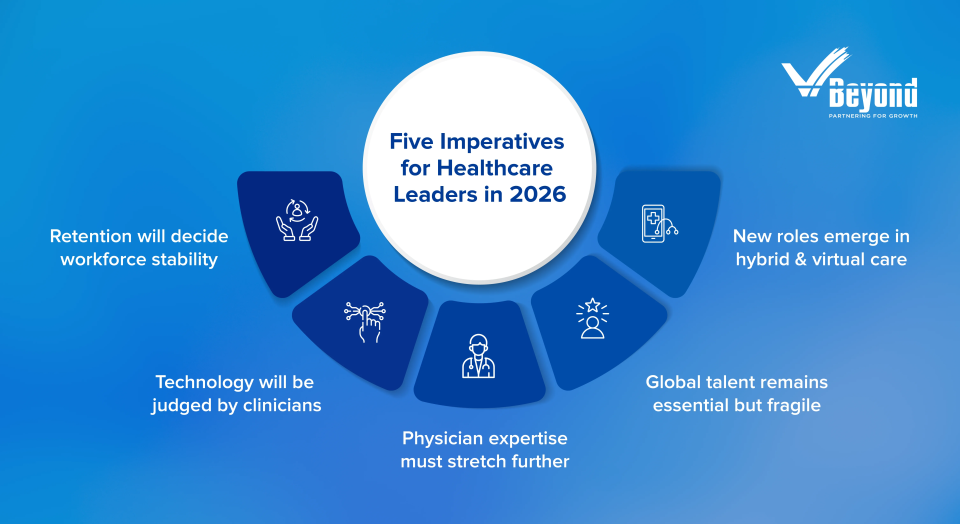Introduction
Healthcare has always been defined by its people: the clinicians, caregivers, and support staff who carry the system on their shoulders. Yet as we move towards 2026, healthcare staffing trends are changing. For years, the focus was on filling urgent shortages and managing escalating costs. Now, the questions are deeper: How do we build a workforce that is sustainable, trusted, and adaptable amid evolving healthcare workforce trends and constant change?
Setting the Stage: Healthcare Staffing Trends in a Market in Transition
Staffing Industry Analysts’ US Staffing Industry Forecast: September 2025 Update offers a sobering snapshot of the current state of healthcare staffing. The market is projected to generate $39.4 billion in revenue in 2025, representing a 6% decline from 2024. Projections for 2026 point to only a slight rebound of around 2%. Performance differs across segments: locum tenens continues to expand, while travel nurse, per diem, and allied health staffing are all expected to contract to varying degrees.
The travel nurse market is forecast at roughly $14.2 billion in 2025, extending its multi-year downturn. Demand is still largely hospital-driven, though concerns about expense and clinician trust remain unresolved. In contrast, the per diem nurse segment is expected to decline modestly to $4.5 billion, with growth driven by local staffing demand as many nurses prefer assignments within 250 miles of home. Allied health staffing is projected to decrease slightly to $9.8 billion, supported by steady demand in therapy, imaging, radiology, and outpatient services.
The locum tenens segment is the fastest growing, projected to increase to $9.6 billion in 2025, with momentum continuing in 2026. Growth is driven by persistent physician shortages, an aging provider base, and the needs of underserved regions, though rising pay rates are pressuring margins. The international nurse market is projected to grow moderately to $1.3 billion in 2025, with further expansion in 2026, though visa retrogression and immigration backlogs continue to govern growth.
Taken together, these forecasts reflect a sector under structural strain rather than cyclical adjustment. Staffing issues in healthcare, such as the ongoing contraction in nurse staffing, modest allied health demand, and rising reliance on locums, point to a fundamental mismatch between supply and need that will not resolve quickly. At the same time, incremental growth in international hiring is constrained by policy barriers, meaning there is no single pipeline capable of closing the gap. For healthcare leaders, this underscores that 2026 cannot be approached as a year of “waiting out the cycle.” Instead, it demands deliberate strategy: reducing dependence on volatile staffing segments, investing in workforce models that improve clinician trust and retention, and preparing for long-term diversification of talent sources. The challenge regarding the future of healthcare staffing is less about surviving short-term disruptions, and more about re-engineering the workforce to ensure access, affordability, and resilience in a market that is unlikely to revert to pre-pandemic norms.
Strategic Imperatives for Healthcare Leaders: Shaping the Future of Healthcare Staffing in 2026
The market signals tell one story. But what matters most is how leaders respond to healthcare staffing challenges. Staffing dynamics in 2026 will demand structural strategies that address workforce sustainability, clinician trust, and patient access. The following six imperatives outline where leaders should focus their attention to build a resilient workforce for the year ahead.
1. Retention Will Decide Who Wins the Staffing Battle
Challenge:
Workforce shortages remain the single biggest constraint in healthcare workforce planning. Hospitals face a widening gap between clinician supply and patient demand. Attrition compounds the problem: seasoned staff are retiring early, and younger clinicians move frequently between employers. Each departure is costly, considering the recruitment spend, loss of expertise and disrupted continuity of care.
Implication:
In 2025, health systems have tried to plug holes with sign-on bonuses, overtime incentives, and inflated contract rates. These tactics bought time, no doubt. However, signs are already emerging that hospitals are scaling back expensive incentives while attrition levels remain stubbornly high. In 2026, therefore, retention will likely shift from being a competitive edge to the defining factor of workforce stability as part of healthcare recruitment strategy. The systems that succeed will be those that keep their clinicians, reducing agency reliance, protecting care teams from constant churn, and insulating themselves from escalating labor costs.
Supporting Signals:
Current discussions on healthcare talent shortage across professional networks, like X and LinkedIn, highlight the urgency. Nurse turnover spiked after the pandemic, with more than 100,000 leaving by 2021, and attrition remains high. Surveys suggest nearly two in five physicians may exit practice within five years, citing administrative burdens and insurer pressures. One in five is already considering leaving because of pay or working conditions. In social care nursing, vacancy rates have climbed as high as 75%. Across these conversations, a clear message surfaces: retention now depends on stronger employee value propositions, genuine flexibility, and credible well-being programs.
Action:
In 2026, leaders must make retention a designed healthcare recruitment strategy, not an afterthought. That means:
- Building structured career ladders and advancement pathways that make clinicians see a future with the organization.
- Redesigning schedules for true flexibility, especially for nurses balancing family and work.
- Moving well-being from symbolic perks to tangible supports like protected time, mental-health access, and workload redesign.
- Treating engagement data as actionable, with visible changes in policy when staff feedback highlights problems.
Organizations that treat retention as the central lever of healthcare workforce planning will stabilize care delivery and safeguard financial resilience in a market where recruitment alone can no longer keep pace.
2. Technology Will Be Judged by Clinicians, Not Administrators
Challenge:
In 2025 so far, hospitals have widely adopted scheduling apps and workforce platforms, often with the goal of improving efficiency. But clinicians increasingly see these tools as systems of oversight rather than empowerment. Surveys and professional forums show nurses reporting less autonomy under digital scheduling, as algorithms lock shifts to employer priorities. At the same time, clinicians are rating platforms publicly on usability, pay transparency, and fairness, creating a shadow reputation market that influences where people choose to work.
Implication:
In 2026, the question will not be whether a hospital has a platform but whether clinicians trust it. Early signals already show the stakes:
- Predictive scheduling pilots succeed only if staff can override the algorithm.
- Pay transparency has become non-negotiable, with clinicians spotlighting discrepancies online.
- AI-driven credentialing tools are shortening onboarding, but questions about bias and data use are making staff cautious.
With technology becoming part of the employee value proposition, digital experience is now a proxy for how much an organization values clinician time and autonomy.
Supporting Signals:
Recent conversations pertaining to healthcare technology trends on X reinforce this change. Clinicians are voicing frustration with inefficient EHRs and meaningless alerts that reduce autonomy, while pushing for AI-enabled systems that minimize burdens and allow overrides. Self-scheduling and availability apps that give clinicians more control are gaining traction, and AI tools that cut no-shows or smooth workflows are welcomed as stress-relievers. These signals point to a growing expectation that technology should actively empower the workforce.
Action:
Healthcare leaders should treat workforce technology as part of their employer brand. That means:
- Auditing platforms for usability and trust from the clinician’s perspective.
- Ensuring override features are standard, so staff maintain real choice.
- Tracking digital satisfaction scores alongside patient experience.
- Involving clinicians directly in procurement and design decisions.
- Disclose, or make available upon request, information on the type of data collected, its sources, and retention policies.
In 2026, a hospital’s digital experience will speak louder than its recruiting ads.
3. When Doctors Are Scarce, Expertise Must Stretch Further
Challenge:
In 2025, physician shortages are a daily constraint, stretching primary care access, thinning emergency coverage, and leaving specialties like behavioral health chronically underserved. Locum contracts kept doors open, but at rising cost and with fragile continuity.
Implication:
In 2026, this scarcity will likely push healthcare into two parallel pathways:
- Automation of routine cognitive and administrative tasks — AI will increasingly take on charting, coding, prior authorization, and early-stage diagnostic screening. This will free up physicians, but it also raises the question of what professional competencies remain core when parts of their role are automated.
- Augmentation of distributed care teams — AI will extend physician expertise across broader networks by supporting advanced practice providers with decision support, enabling one specialist to guide multiple teams virtually, and triaging patients to the right level of care.
These dual pathways – automation and augmentation – will not simply lighten workloads; they will reshape what it means to be a physician and how the profession interacts with the broader care team. According to a recent review of AI’s impact on workforce dynamics in medicine titled, AI and the Future of Healthcare Work: Human-AI Collaboration in Medical Practice [published in the International Journal of Scientific Research in Computer Science, Engineering and Information Technology (IJSRCSEIT)], successful integration will depend on frameworks that balance automation with augmentation while preserving the human element in care delivery.
Action:
Leaders must treat the physician shortage not as a staffing gap but as a design problem. This means:
- Mapping which physician functions are at high risk of automation versus which are primed for augmentation.
- Redefining training and scope-of-practice for both physicians and APPs to align with AI-supported models of care.
- Building governance frameworks for human oversight, ensuring clinical accountability does not blur in AI-augmented workflows.
- Partnering with educational institutions to prepare the next generation of clinicians for AI-integrated practice.
2026 calls for organizations to re-engineer care delivery so that limited expertise stretches further, without losing the human connection at the heart of medicine.

4. Global Talent: Essential but Increasingly Fragile
Challenge:
According to a Bloomberg News article on immigration, featured by Staffing Industry Analysts, foreign-born workers make up nearly 40% of home health aides and about 30% of personal care roles in the U.S. Demand for these jobs is projected to grow 21% by 2033, yet nearly two-thirds of workers in these roles leave within their first year. Immigration has been critical in filling these gaps, but recent changes to work authorizations and legal status for hundreds of thousands of immigrants have added new uncertainty for providers.
Implication:
In 2026, immigration will remain both indispensable and fragile. Leaders cannot assume steady inflows of international staff, nor can they replace them quickly if policy shifts disrupt pipelines. This makes global talent a strategic asset that requires deliberate support and contingency planning, not opportunistic hiring.
Supporting Signals:
Global conversations on international nurse recruitment across social and professional platforms, such as X, echo the same urgency. Discussions highlight that worldwide health worker shortages could reach 11 million by 2030, worsened by migration imbalances and inequities. Executives are increasingly calling for broader pathways for foreign doctors and nurses, alongside expanded roles for nurse practitioners. At the organizational level, more than half of healthcare executives report deploying four or more strategies simultaneously to meet nursing demand, while on-demand staffing platforms are being used to reduce reliance on high-cost travel nurses.
Action:
Healthcare organizations in 2026 should treat international staff as a strategic workforce investment by:
- Integration first: Building structured onboarding, cultural adaptation, and mentorship so international hires see a long-term future with the organization.
- Scenario planning: Stress-testing staffing models against multiple immigration scenarios — from backlogs to sudden status changes — to avoid over-reliance on a single pipeline.
- Geographic diversification: Expanding recruitment beyond traditional source countries to spread risk.
- Retention focus: Creating tailored support for internationally recruited staff around settlement, licensing, and career progression.
Global talent will continue to underpin U.S. healthcare capacity. Healthcare leaders will do well to plan for multiple immigration outcomes, from delays to sudden status changes, to keep their workforce stable in 2026.
5. Anticipating the New Roles of Hybrid and Virtual-First Care
Challenge:
Care is no longer confined to the hospital or clinic. Outpatient growth is steady, and hybrid models that combine digital and in-person touchpoints are becoming mainstream. At the 2025 HIMSS Global Health Conference & Exhibition, the conversation made clear that telehealth has moved past experimentation. The real question now is how to embed it permanently: across service lines, specialties, and business models. For healthcare leaders, this shift is more about preparing for the new kinds of work it creates.
Implication:
In 2026, the differentiator will likely be which organizations anticipate the roles and competencies that hybrid and virtual-first care demand. Among them:
- Digital health navigators who help patients and families access monitoring tools, apps, and portals.
- Virtual care coordinators who manage follow-up, education, and chronic care across digital and in-person visits.
- Ambient AI scribes and workflow specialists who reduce documentation burdens for clinicians.
- Cross-state practitioners enabled by evolving licensure rules, creating new expectations for flexible deployment.
- Clinicians with digital bedside manners, blending clinical skill with fluency across video, chat, and app-based communication.
These roles are surfacing in pilot programs today. By 2026, the risk is that organizations without a plan to scale them would find themselves scrambling to meet both patient expectations and regulatory standards.
Supporting Signals:
The shift toward outpatient and hybrid care is already visible in multiple signals. At HIMSS discussions, leaders emphasized that hybrid practices are rebuilding workflows with dedicated virtual care teams, while payers are embedding telehealth into value-based contracts, creating demand for chronic care coordinators and digital support roles.
Clinician forums highlight the ongoing friction of EHRs and the call for AI-enabled tools to reduce administrative load, and patients are voicing clear expectations for equitable, multimodal communication, raising the bar for staff competencies.
Recent conversations on professional platforms like X extend this picture further, highlighting new roles entering the discourse: AI operations leads to manage automation systems, data translators to bridge analytics and clinical insight, bedside AI consultants for language translation, virtual coordinators working through AI-driven workflows, ambient AI scribes capturing notes and orders, hybrid AI–human triage teams, AI voice agents for patient routing, and even strategists tasked with integrating AI into care models.
Action:
Healthcare leaders should begin treating hybrid and virtual-first roles as a permanent layer of their workforce strategy. That means:
- Forecasting which roles are most likely to expand and formalizing them in job architectures and budgets.
- Partnering with educational and licensing bodies to ensure pipelines exist for digital health navigators, virtual coordinators, and AI-augmented clinicians.
- Training clinicians in digital bedside manner, not just technical skills.
- Aligning workforce planning with payer models that increasingly reimburse virtual and hybrid care.
Hybrid and virtual-first care are not add-ons; they are quietly becoming the system’s new operating model. Leaders who anticipate the roles this model demands will be shaping the workforce for 2026 and beyond.
Conclusion
Healthcare staffing challenges test imagination. The year ahead will reward leaders who stop asking “how do we fill the gaps today?” and start asking “what kind of workforce will tomorrow demand?” The answer will be found in bold choices that redefine roles, rebuild trust, and reframe care around people rather than settings, thereby shaping healthcare workforce trends. 2026 may not solve the workforce crisis, but it will reveal which organizations are ready to lead the future of healthcare staffing.
2026 will separate organizations that react from those that reimagine. Partner with us to explore how your workforce strategy can stay ahead of shifting roles, care models, and global talent realities.


